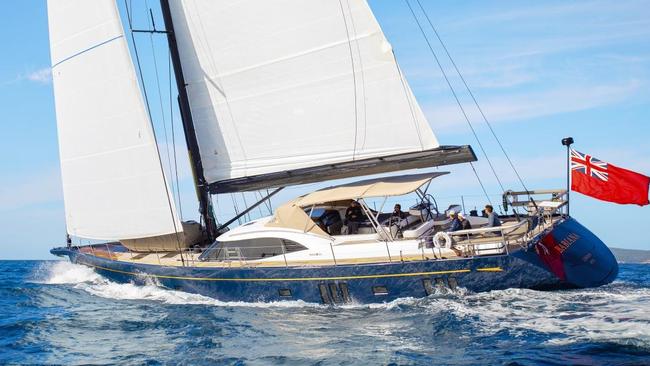
As CEO of Uber, Dara isn’t doing too badly now. Last year he got $36m, including super. That’s about 316 times what an average full-time employee in the Uber office gets and about a billion times more than the average Uber driver earns – and that’s before they take out insurance, fuel and the other costs of running their own cars.
Dara connects people who want to go somewhere with an independent contractor in a car. This is basically the old taxi model with an electronic platform versus a radio operator handing out jobs. It’s one of the world’s largest platforms for independent work.
Uber makes money from taking a commission of 15 per cent to 30 per cent from every fare. The bigger the fare the driver gets, the more money Uber makes.
But it’s not as easy as it sounds. For one thing, quite a few heavies don’t like the fact that Uber pays its drivers like contractors when they are treated like employees. At this year’s AGM, one shareholder proposal stated: “Uber’s model of using regulatory loopholes to avoid providing adequate workplace protections and controlling how work is performed has left drivers facing pervasive health and safety issues, disproportionately harming this primarily black, brown, and immigrant workforce.
“Despite Uber drivers being a small percentage of the country’s workforce, they comprise almost 1 per cent of US job-related deaths.”
So, there are a lot of expensive lawsuits around the world.
That probably had some part to play in Uber losing $50bn in the past nine years. As the Financial Times says: “Uber’s financial turnaround has come on the back of a rebound in demand for ride-hailing following the pandemic and a successful expansion into food deliveries.
Under Khosrowshahi, who stepped in six years ago when co-founder Travis Kalanick was forced out over a series of scandals, the company has also raised prices and acted aggressively to rein in costs, bolstering its profit margins”.
And that’s the thing.
So, the way Uber can raise the amount of money it makes is through add-ons like charging extra for a better car, cancellation fees and the subject of today’s bar side chat, surge pricing. Now clearly Dara has instilled the tech way of talking throughout his organisation. In a wonderful reply to one of my ongoing discussions with an Australian spokeswoman for Uber, she uttered the immortal lines: “Dynamic pricing – often referred to as surge – is a temporary way of ensuring riders who want a ride can always get one, during periods of peak demand. This happens in real time when demand from riders at a particular time exceeds the supply of driver-partners. By increasing the price, more driver-partners go into an area to lean into the earning opportunity, and people who don’t want to pay the higher price and have time can wait until more driver-partners are in the area or choose an alternative mode of transport.”
Now in the interests of full transparency (we report you decide), you should know the old bloke and I are huge Uber customers. Each year we leave the office and head to the Corner Bar at the Kensi for the Christmas Breakup event. (This year it’s on Friday 22 December with two-for-one gin and tonics, two-for-one sparkling, and only $6 for sneaky Coopers.) Break-up is bigger than Burning Man without so much nudity, symbolic burning of large wooden effigies but full of the usual hedonistic trappings you might expect. You’ve had the same experience, I bet.
While the event officially ends at 7pm you end up leaving some hours later but early enough to get home to watch Cocaine Sharks on Binge where Tom Hird travels to the Florida Keys to look for great whites who manage to catch some marching powder up their noses and turn into F1 drivers chasing booty. Not one for the kiddies.
By then you: a) have forgotten you brought the car; b) can’t find the car or c) couldn’t care less about the car and order an Uber.
Look, lots of you (three) have complained about Uber and surge pricing but I didn’t take any notice till I had a suspect surge rip-off. Naturally, I immediately emailed Uber Australia’s media team who quite rightly ignored me.
After a week, I wrote to Dara’s Khosrowshahi media team in septic land who had Uber Australia’s media team contact me. There was some flying emails till at last I set everything out with attachments and final questions. Guess what the final reply was? “I am out of office until Monday 11th December.” Another WFH? A call from Dara to get over to global HQ? A call from Dara’s 18-year-old son who revealed to The New York Times that: “My dad’s a lizard person. They’re reptilian aliens that can shapeshift and control the world”?
Well, that explains why Uber pushes its drivers to surge price.
Talking of the greatest engineers in F1, unsettling news from Adrian Newey whose Red Bull RB19 won 21 out of the 22 races in 2023 making it the most dominant car in F1 history. (Emails to address below.) Newo has given up his Swift Sprite Alpine caravan ($42K) towed behind his Ford GT40 for an $11m Oyster 885 yacht. Both his F1 cars and his new floating gin palace have cockpits.
In the Oyster, the cockpit has a multifunctional table that seats eight with ease, with drinks on hand from the convenient integrated refrigerator. Her wide-beam stern provides space for sunbathing, and the large hydraulic bathing platform is the perfect space from which to enjoy water sport toys. It also doubles as a unique spot for alfresco dining.
jc@jcp.com.au




Dara Khosrowshahi, 54, of San Francisco, controls a few million cars that bring in about $47bn a year. He was born in Tehran into a wealthy family with a lot of money who had to leave the country with not much money after the Shah got the boot.